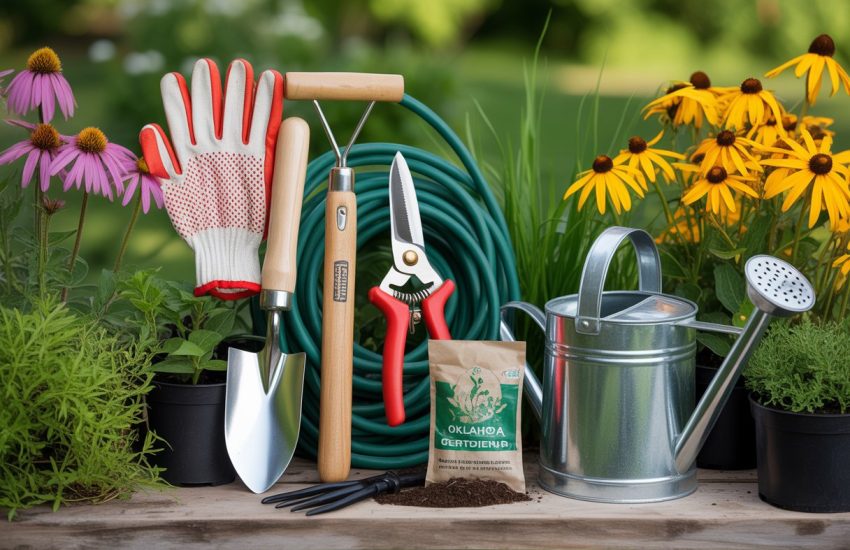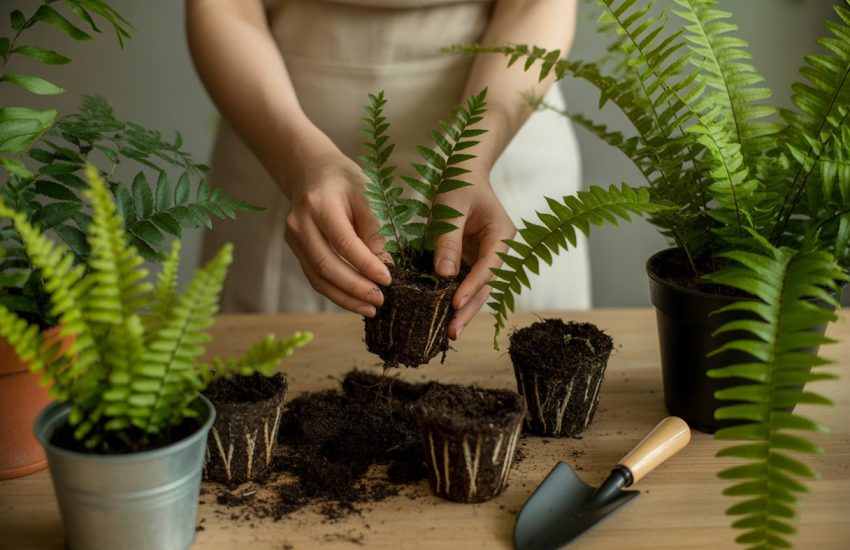Basil: Annual or Perennial? A Clear Explanation
Basil is a popular herb that is used in many culinary dishes, including salads, pasta, and pizza. It is also known for its medicinal properties and is used in traditional medicine to treat various ailments. However, there is often confusion about whether basil is an annual or perennial plant.

In general, basil is considered an annual plant, which means that it completes its life cycle in one growing season. It is typically grown from seed in the spring and will produce leaves throughout the summer. As the weather gets cooler in the fall, the plant will start to decline and eventually die off. However, there are some varieties of basil that can be grown as perennials in certain climates.
One example of a perennial basil is the African Blue basil, which is native to East Africa. This variety can survive through the winter in mild climates and will continue to produce leaves year-round. However, it is important to note that even perennial basil plants will eventually die off after a few years and will need to be replaced. Overall, understanding the difference between annual and perennial basil can help gardeners choose the best variety for their needs and ensure a successful harvest.
Understanding Basil
Basil is a popular herb that belongs to the family Lamiaceae. It is also known by its botanical name, Ocimum basilicum. Basil is widely used in cooking and has a unique flavor and aroma that adds a distinct taste to various dishes.
Classification and Varieties
There are many varieties of basil, which differ in their appearance, flavor, and aroma. The most common variety is sweet basil, which has green leaves and a sweet, slightly spicy flavor. Other popular varieties include holy basil, African blue basil, and Thai basil.
Holy basil, also known as tulsi, is considered a sacred plant in Hinduism and is used in Ayurvedic medicine. African blue basil has purple leaves and a strong aroma, while Thai basil has a licorice-like flavor and aroma.
Basil Plant Characteristics
Basil is an annual herb, which means that it completes its life cycle in one growing season. The plant grows up to 2 feet tall and has green leaves and white or purple flowers. The leaves are the most commonly used part of the plant, and they are harvested before the plant flowers.
Basil has a shallow root system and prefers well-drained soil. It requires full sun and warm temperatures to grow, and it is sensitive to frost. Basil can be grown from seeds or cuttings, and it is easy to propagate.
In conclusion, basil is a versatile herb that adds flavor and aroma to various dishes. With its many varieties and easy-to-grow nature, it is a popular choice for home gardeners and chefs alike.
Basil as an Annual or Perennial
Annual vs Perennial Plants
Basil is a popular herb used in cooking and is known for its aromatic leaves. One of the most common questions asked about basil is whether it is an annual or perennial plant. The answer to this question depends on the type of basil being grown.
Annual plants complete their life cycle within one growing season, while perennial plants live for multiple years. Basil can be either an annual or perennial plant, depending on the variety.
Basil’s Growth Cycle
Most commonly, basil is grown as an annual herb. The plant grows from seed, germinates and produces seedlings, and then matures and flowers. Once the flowers have bloomed and the plant has produced seeds, it will begin to die back. The entire growth cycle of an annual basil plant takes place within one growing season.
On the other hand, some varieties of basil, such as Holy Basil or Tulsi, are perennials. These plants can live for several years, and will continue to grow and produce leaves year after year. Perennial basil plants will often die back during the winter months, but will regrow in the spring from the root system.
Annual plants, including annual herbs like basil, are generally easier to grow and care for than perennials. They require less maintenance and can be grown from seed each year. Perennial plants, on the other hand, require more attention and care, but can provide a continuous supply of fresh leaves for years to come.
In terms of seed production, annual basil plants will produce seeds at the end of their growing season, while perennial basil plants can produce seeds each year. It is important to note that basil seeds are very small and delicate, and can be difficult to germinate without proper care and attention.
Overall, whether to grow basil as an annual or perennial plant depends on personal preference and growing conditions. Both types can be rewarding to grow and provide a delicious addition to any kitchen.
Cultivation and Care
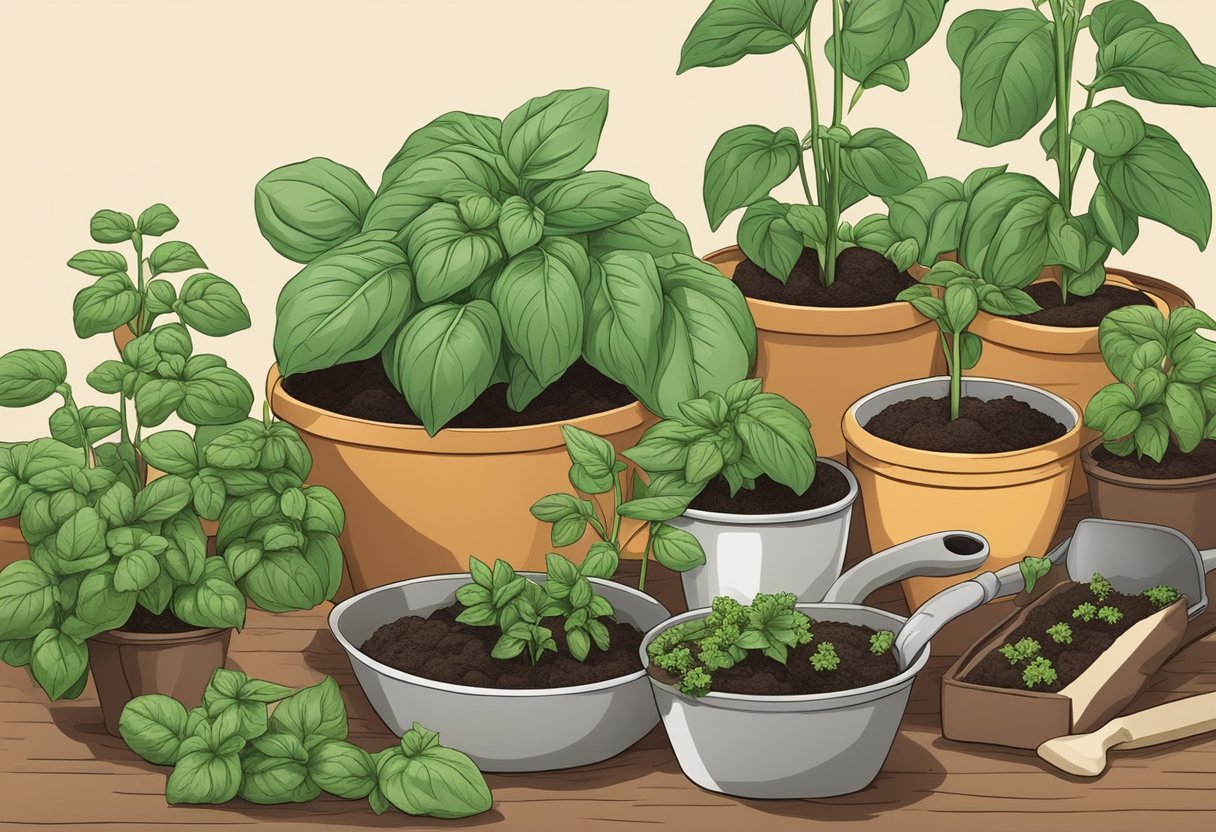
Planting and Growing Conditions
Basil is a popular herb that can be grown both indoors and outdoors. It can be grown as an annual or a perennial, depending on the climate and growing conditions. Basil prefers well-drained soil and full sun, but it can also grow in partial shade.
For those living in warmer climates or tropical climates, basil can be grown year-round. However, in colder climates, it is best to grow basil as an annual during the warmer months.
When planting basil, it is important to space the plants at least 12 inches apart to allow for proper growth. The ideal temperature for growing basil is between 70 and 80 degrees Fahrenheit.
Watering and Feeding
Basil requires regular watering, especially during the hotter months. It is important not to let the soil dry out completely, but also not to overwater as this can lead to root rot. A good rule of thumb is to water the plant when the top inch of soil feels dry to the touch.
Fertilizers can also be used to promote healthy growth. A balanced fertilizer with equal parts nitrogen, phosphorus, and potassium can be applied every two to three weeks during the growing season.
Pruning and Harvesting
Pruning is an important part of proper care for basil. Regular pruning will help to keep the plant healthy and promote new growth. To prune basil, pinch off the top two sets of leaves when the plant has reached a height of six inches. This will encourage the plant to grow bushier and produce more leaves.
Harvesting basil can be done once the plant has reached a height of at least six inches. It is best to harvest in the morning when the oils are most concentrated. Pinch off the leaves at the stem and avoid cutting the stem itself, as this can damage the plant.
Overall, growing basil requires proper care and attention to ensure a healthy and productive plant. By following these guidelines for planting, watering, feeding, pruning, and harvesting, gardeners can enjoy fresh basil year-round.
Basil in Different Climates
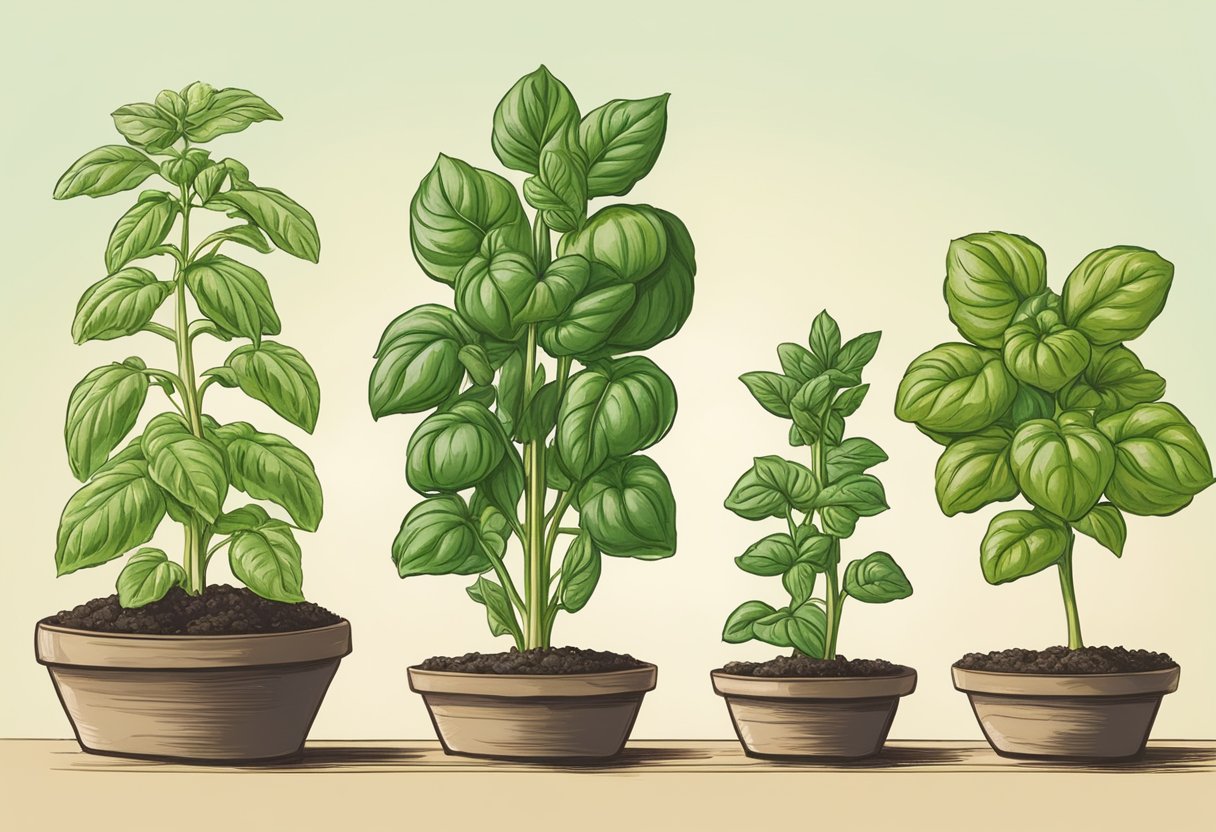
Basil is a popular herb that is commonly used in cooking and is known for its sweet and fragrant aroma. It is a versatile herb that can be grown in different climates, but its growth and survival depend on various factors such as temperature, frost, and growing season.
Temperature and Frost Considerations
Basil is a warm-weather herb that thrives in temperatures between 70°F to 90°F. It does not tolerate frost and requires protection during cold weather. If the temperature drops below 50°F, basil plants can suffer from cold damage, which can stunt their growth or even kill them.
In areas with cold temperatures, basil can be grown as an annual herb or as a perennial herb indoors. In warmer regions, basil can be grown as a perennial herb, but it is essential to protect it from frost during winter.
Growing Basil in Various Regions
Basil can be grown in different regions, including Africa, Asia, and tropical regions. In tropical regions, basil can be grown all year round due to the warm and humid climate. In contrast, regions with cold weather may require specific planting times and protection from frost.
In regions with a short growing season, basil can be grown indoors or in a greenhouse to extend the growing season. In areas with a long growing season, basil can be grown outdoors, and the plants can produce more leaves.
In conclusion, basil can be grown in different climates, but its growth and survival depend on various factors such as temperature, frost, and growing season. It is essential to understand these factors to ensure that the basil plants thrive and produce healthy leaves.
Propagation and Lifecycle
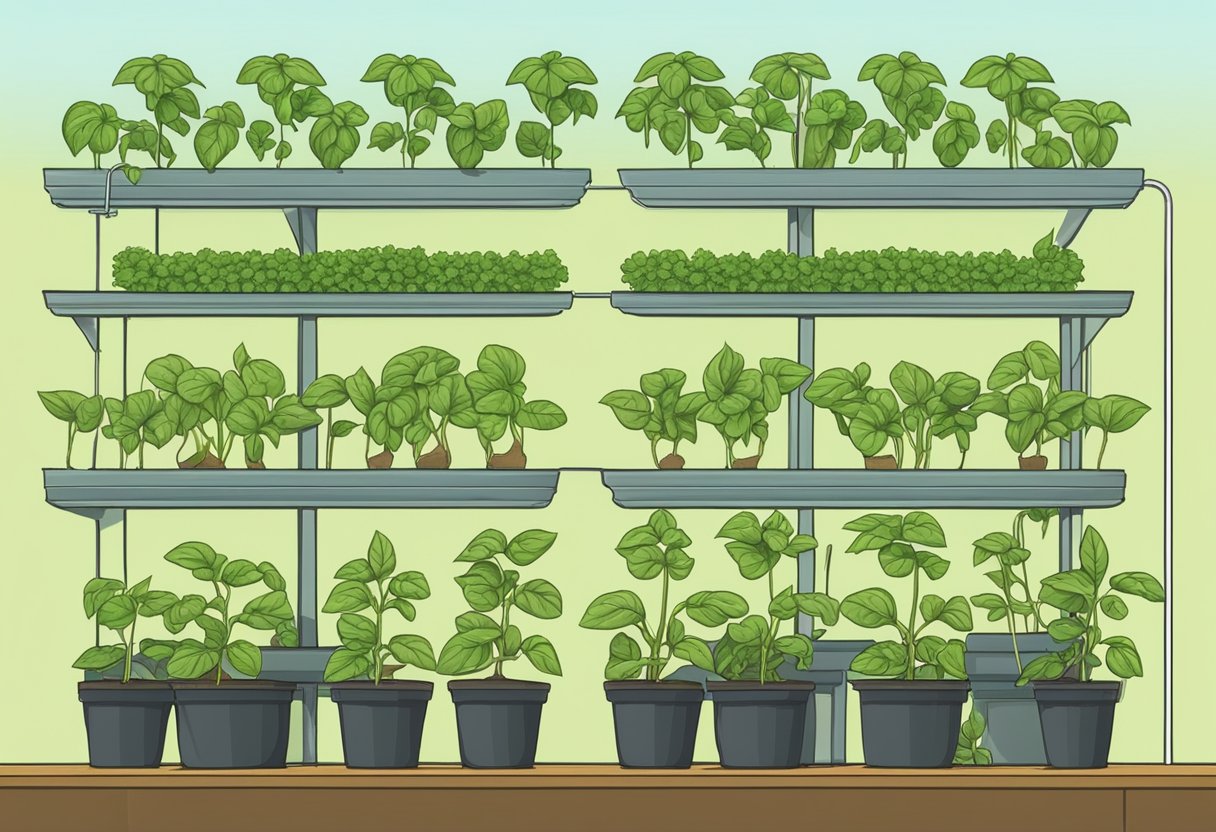
From Seeds to Plants
Basil can be propagated by seeds, which are easy to obtain and grow. The seeds should be sown in a well-draining soil mix and kept moist until germination. Germination usually takes 5-10 days, depending on the variety and growing conditions. Once the seedlings have developed their first set of true leaves, they can be transplanted into individual pots or containers.
Replanting and Perpetuation
Basil is an annual herb, which means that it completes its life cycle in one growing season. However, it can be perpetuated by replanting or by allowing it to self-seed. When the plants have reached maturity and are ready to harvest, the leaves can be harvested by cutting the stems just above a node. This will encourage the plant to produce more leaves and prevent it from flowering prematurely.
To perpetuate basil, the plants can be replanted in the garden or in containers. It is important to replant them in a new location to prevent the buildup of soil-borne diseases. Alternatively, basil can be allowed to self-seed by leaving some of the flowers to mature and produce seeds. The seeds can be collected and sown in the following growing season.
Basil can also be propagated by cuttings. This involves taking a stem cutting from a mature plant and rooting it in water or soil. The cutting should be taken from a healthy plant and should have at least two nodes. The leaves on the lower half of the stem should be removed, and the cutting should be placed in water or soil. With proper care, the cutting will develop roots and can be transplanted into a pot or garden.
Basil in Garden and Containers
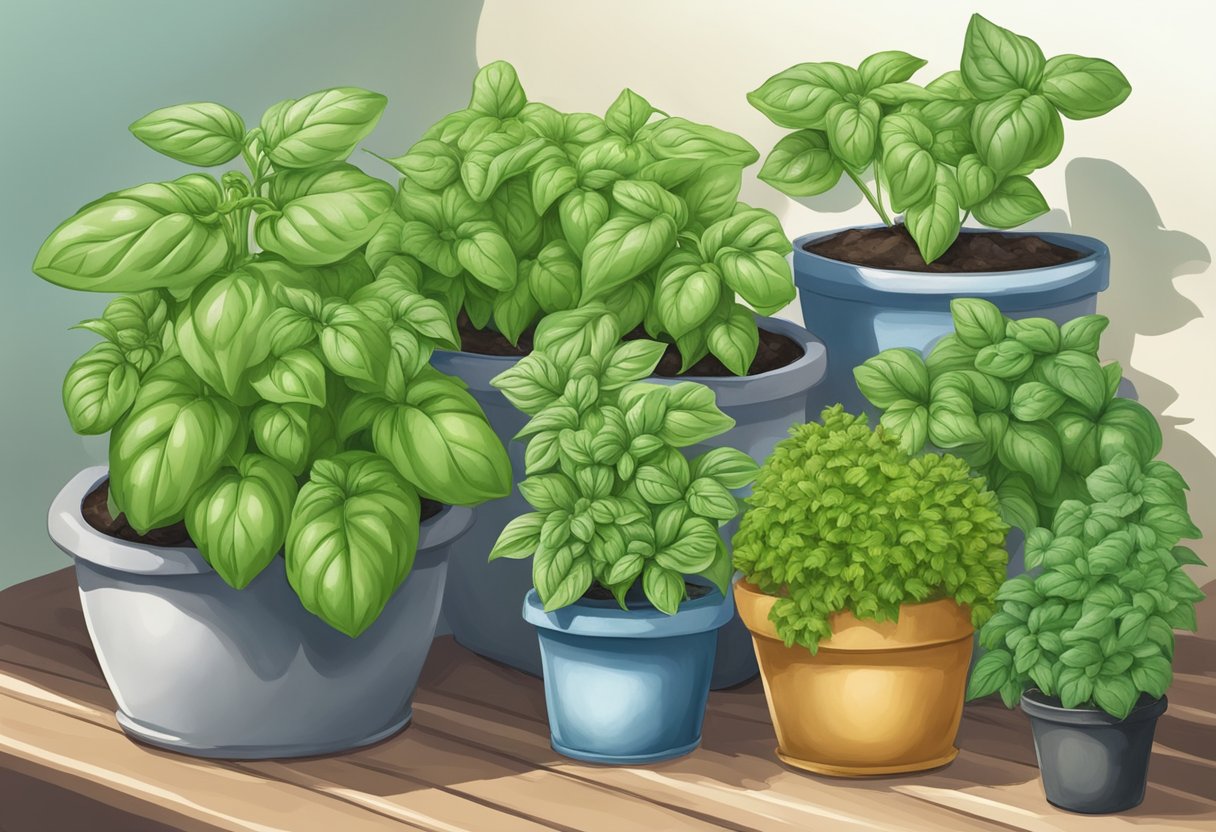
Basil is a popular herb that can be grown both in the garden and containers. It is a versatile plant that is easy to grow and care for. Here are some tips for cultivating basil in the garden and containers.
Garden Cultivation
Basil plants prefer warm weather and well-drained soil. They also require full sun exposure for at least 6 hours per day. Gardeners should plant basil in the spring after the last frost date. They can be grown from seed or purchased as seedlings from a nursery.
When planting basil in the garden, gardeners should space the plants 12-18 inches apart. They should also water the plants regularly, but avoid overwatering as this can cause the roots to rot. Gardeners should also fertilize the plants every 4-6 weeks with a balanced fertilizer.
Container and Indoor Gardening
Basil can also be grown in containers and indoors. When growing basil in containers, gardeners should choose a pot that is at least 6 inches in diameter. They should also use well-draining soil and place a layer of gravel at the bottom of the pot to improve drainage.
Indoor basil plants require a grow light to provide the necessary light exposure. They also need to be watered regularly, but not overwatered. Gardeners should also fertilize indoor basil plants every 4-6 weeks.
In conclusion, basil is a versatile herb that can be grown in the garden and containers. Gardeners should follow these tips for successful cultivation of basil plants.
Pests and Diseases

Common Basil Pests
Basil is generally a hardy plant that can withstand many pests, but it is still susceptible to a few common pests. Aphids are a common pest that can attack basil plants. These small, soft-bodied insects suck the sap from the leaves, causing them to wilt and turn yellow. To prevent an aphid infestation, it is important to keep the basil plant healthy and well-watered. If an infestation does occur, spraying the plant with a mixture of water and dish soap can help get rid of the aphids.
Another common pest that can attack basil plants is the Japanese beetle. These beetles eat the leaves of the basil plant, leaving behind large holes. To prevent a Japanese beetle infestation, it is important to keep the area around the basil plant free of weeds and other debris. If an infestation does occur, using a natural insecticide can help get rid of the beetles.
Disease Prevention and Treatment
Basil is also susceptible to a few common diseases. One of the most common diseases that can affect basil is downy mildew. This fungal disease can cause the leaves of the basil plant to turn yellow and wilt. To prevent downy mildew, it is important to keep the basil plant well-ventilated and to avoid over-watering the plant. If downy mildew does occur, removing the affected leaves and spraying the plant with a natural fungicide can help control the disease.
Another common disease that can affect basil is fusarium wilt. This fungal disease can cause the leaves of the basil plant to turn yellow and wilt, and can eventually kill the plant. To prevent fusarium wilt, it is important to avoid planting basil in the same soil where other plants in the mint family have grown. If fusarium wilt does occur, removing the affected plant and planting a different crop in the area can help prevent the disease from spreading.
Proper care and attention can go a long way in preventing pests and diseases from affecting basil plants. Keeping the plant healthy and well-watered, and avoiding over-crowding and over-watering, can help prevent many common problems. When pests or diseases do occur, using natural remedies and treatments can help keep the plant healthy and thriving.
Basil Usage and Benefits
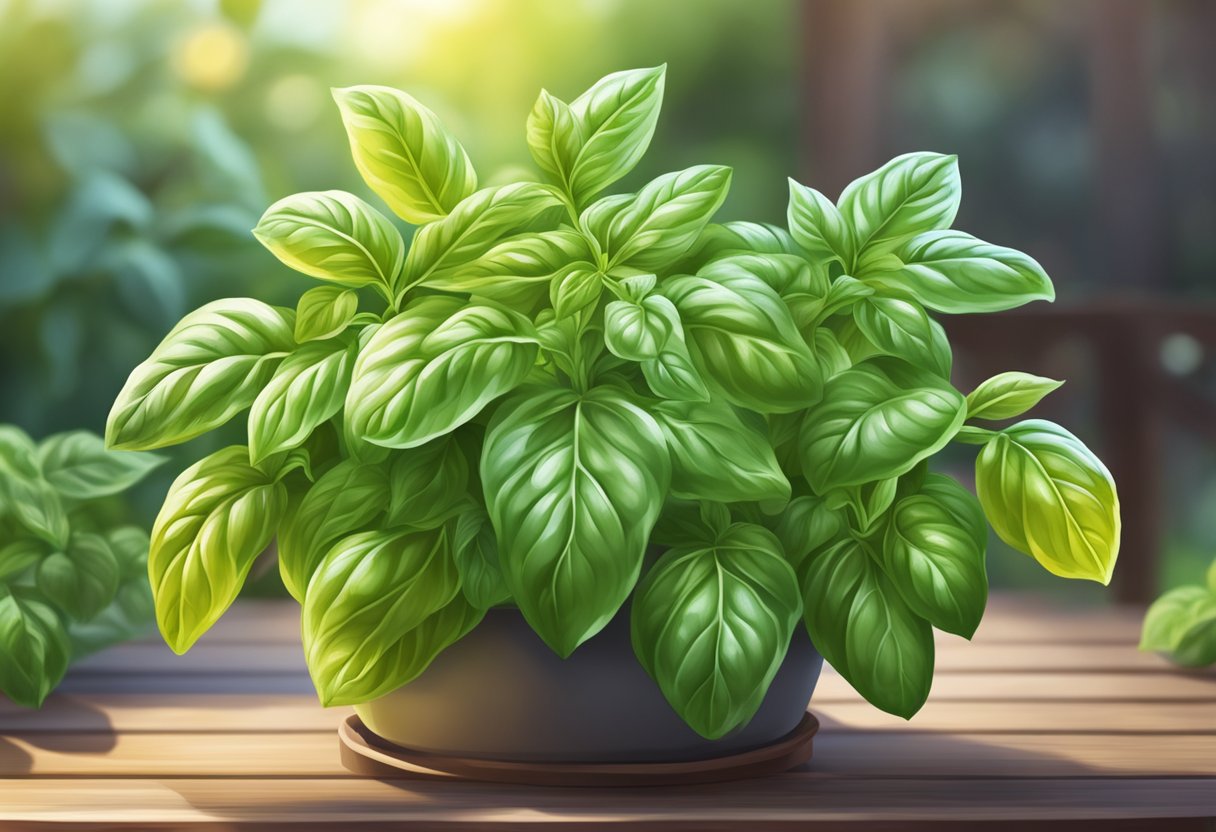
Basil is a versatile herb with a wide range of culinary and medicinal uses. It is an annual herb that is easy to grow and is commonly used in cooking, aromatherapy, and traditional medicine.
Culinary Applications
Basil is a popular culinary herb that is used in a variety of dishes. Its leaves and flowers have a sweet and slightly peppery flavor that adds depth and complexity to many recipes. One of the most popular uses of basil is in pesto, a sauce made by blending together basil leaves, garlic, pine nuts, Parmesan cheese, and olive oil. Pesto is commonly used as a pasta sauce, but it can also be used as a spread or dip.
Basil is also used in a variety of other recipes, including soups, stews, sauces, and salads. It pairs well with tomatoes, garlic, lemon, and many other ingredients. Basil can be used fresh or dried, and it is easy to grow at home in a sunny window or garden.
Aromatic and Medicinal Uses
Basil has been used for centuries in traditional medicine for its many health benefits. It is said to have anti-inflammatory, antibacterial, and antioxidant properties, and it may help to lower blood sugar levels and improve digestion.
Basil is also used in aromatherapy for its calming and uplifting properties. Its aroma is said to promote feelings of joy and happiness, and it may help to reduce stress and anxiety.
In addition to its culinary and medicinal uses, basil is also a popular ornamental plant. Its bright green leaves and fragrant flowers make it a beautiful addition to any garden or indoor space.
Overall, basil is a versatile herb with many uses and benefits. Whether you are cooking with it, using it for its medicinal properties, or simply enjoying its aroma and beauty, basil is a valuable addition to any home.
Frequently Asked Questions
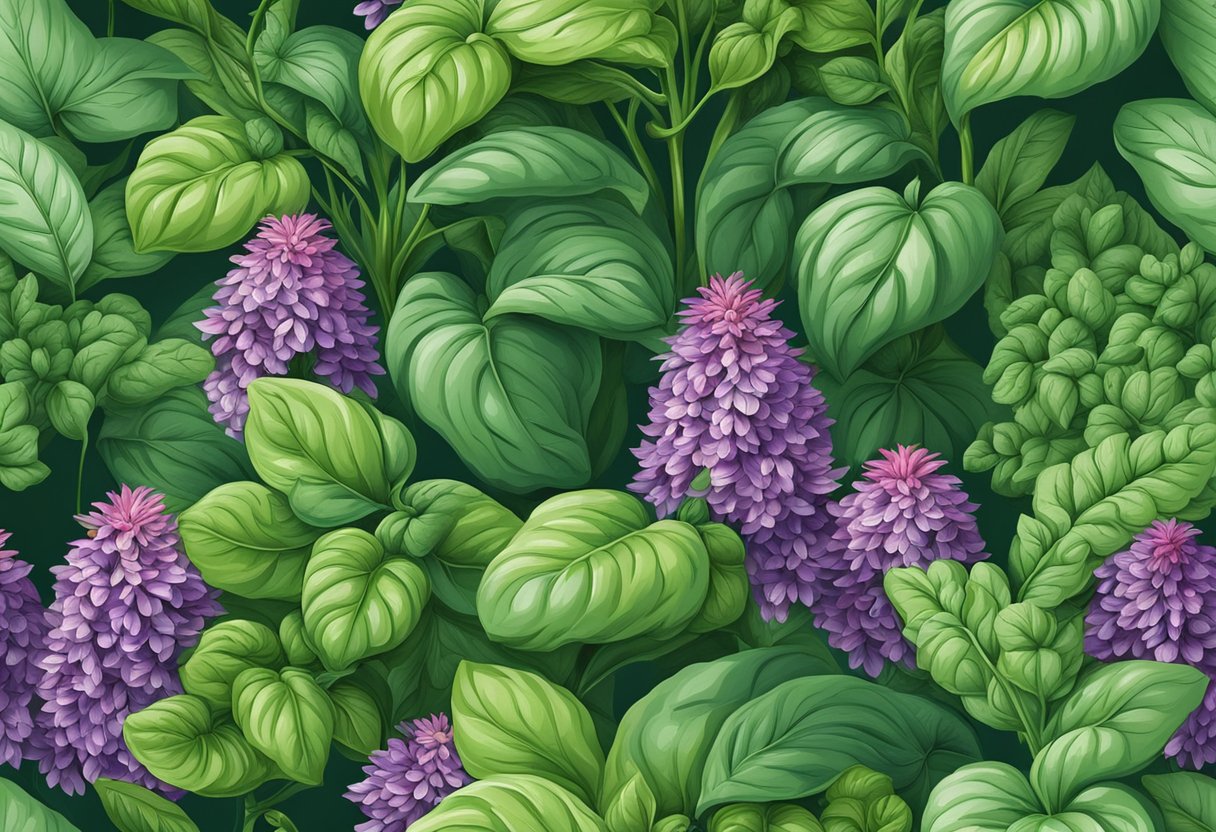
Is basil considered a perennial herb in any climate?
No, basil is typically considered an annual herb. However, in warmer climates, such as tropical or subtropical regions, basil can sometimes grow as a perennial herb.
How does basil’s life cycle vary between annual and perennial growth?
Basil’s life cycle can vary greatly depending on whether it is grown as an annual or perennial herb. Annual basil typically grows for one season, producing leaves and flowers before eventually dying off. Perennial basil, on the other hand, can continue to grow and produce leaves year after year, as long as it is properly cared for.
What conditions are needed for basil to survive winter and become perennial?
For basil to survive winter and become a perennial herb, it needs to be grown in a warm, sunny location with well-draining soil. It also requires adequate water and nutrients, and should be protected from frost and extreme cold temperatures.
Can basil regrow after a year, or does it need to be replanted?
If properly cared for, basil can regrow after a year and continue to produce leaves and flowers. However, it is important to note that basil is typically grown as an annual herb, and may not survive multiple growing seasons without proper care and maintenance.
What is the typical lifespan of a basil plant?
The typical lifespan of a basil plant can vary depending on a variety of factors, including growing conditions, care, and maintenance. Annual basil plants typically live for one growing season, while perennial basil plants can continue to grow and produce leaves for several years.
How does Thai basil differ from other varieties in terms of perennial growth?
Thai basil is similar to other varieties of basil in terms of its growth habits and requirements. However, it is known for its strong, spicy flavor and aromatic qualities, and is often used in Thai and Southeast Asian cuisine. Like other varieties of basil, Thai basil can sometimes grow as a perennial herb in warmer climates.

